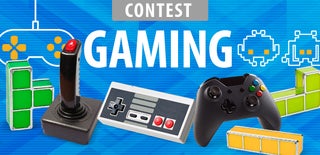Introduction: Battery Powered Retropie Console
Reader beware this is my first instructable.
Its a Raspberry Pi 2 inside a playstation with the awesome Retropie operating system. This allows you to play games using emulators for gameboy advance, playstation, super nintendo, etc... with actual playstation controllers. Optionally you can spice it up and make it battery powered or add super nintendo controllers for absolutely no reason at all.
here are the things i used to make it:
playstation console
laptop batteries
phone charger
3.5mm composite to rca cable
hdmi extension cable
portable usb battery bank charger
super nintendo controller ports (not recomended)
micro sd card
3.5" ide hard drive cable
the tools i needed:
solder and soldering iron
dremel
hot glue gun with glue
razor blade, screwdrivers...
Step 1: Ide Hard Drive Cable Direct to Original Controller Ports From Rpi 2
The gamecon gpio github webpage is pretty much everything you need to connect the controllers of your choice to the raspberry pi's gpio ports.
https://github.com/recalbox/recalbox-os/wiki/Gamecon-controllers-(EN)
I used the playstation controller ports and super nintendo controller ports so that i can have the capability to play with 4 players. I managed to fit the super nintendo ports in the space where the cd reader used to be, i simply glued them down with gorilla glue (someone told me it looks bad) that hurt my feelings, anyway the lid still closes luckily but i had to cut off some plastic. Also i cut the trace on the super nintendo ports that power the red LED, it used to light up and it was cool. I thought i could save some energy, looking back, i should have left it... oh well.
Step 2: Cell Phone Charger Connected to the Original Power Port of the Playstation
i gave up trying to reuse the original playstation power supply, instead i used a usb phone charger soldered to the playstation power jack. Simple enough and externally more durable than a small microusb port! Wish i could have thought of this before.....
Step 3: Composite Connections for 3.5mm Rpi 2 Jack
I used a random 3.5mm to composite cable, sliced it up and then connected the wires to a set of female rca jacks that i removed from a crt tv motherboard. A simpler method would be to use male to female rca adapters but i found those to be unusually expensive for what they are, plus i liked how this rca set was physically attached together with a plastic casing, this allowed me to easily glue it down onto the playstation's plastic base.
Here's a tip that caused me some grief. Apparently i used a tv camcorder cable which has its video cable disguised as the red rca connection. If you use one of these cables connect the red to the yellow and the yellow to the red. Otherwise you wont get any video.
Step 4: Power Button, Batteries, and Charging Circuit
these steps are mostly unnecessary if you are uninterested in battery power. However If you want to put some old laptop batteries to good use, you can wire a bunch of them up in parallel which keeps all the batteries at the same 3.7 Volts. Then solder the positive and negative leads of the entire battery pack to the battery charging circuit. Whether it be a standalone lithium battery charging circuit from ebay or from gutting the insides of a portable USB battery bank (what i did). If you do happen to take this route, make sure to use a battery bank that has a fast 2.1 amp charging port because a lot of small battery banks only charge at 1amp which is probably not enough power to feed the raspberry pi 2. If you choose to buy a standalone battery charging circuit, then you will also need to buy a circuit for powering the raspberry pi that boosts 3.7 Volts of battery power to 5 Volts and provides that power to a USB port for powering the raspberry pi from the batteries.
I used the playstation power button which i removed from the playstation power supply pcb. However i don't recommend doing the same because my usb battery bank was actually designed to operate with a momentary push button switch. you guessed it, the playstation power button is not a momentary switch so i have to press it 3 times before the console will turn on. I would only have to press it one time before when i had the momentary switch connected to the circuit in my pictures. Reason being i didn't calculate where and how to position the momentary switch underneath the playstation's power button, so i just reused the original button which lined up well enough with some plastic credit card padding and glue underneath it. yes i am lazy :( oh well... i will think of it as something similar to a secret code to gain entry like knocking 3 times.
Step 5: Put Everything Inside the Playstation Case!
luckily the HDMI extension cable i used fit right into the playstation top cover serial spot, i just pushed it in and it fit real snug, no glue required! It sticks out but that is a small price to pay for the durability and assurance that it cant be physically pushed in.
In order to fit everything inside i had to grind off all those plastic nubs on the playstation base piece. Everything sat flush afterwards. I strategically placed the raspberry pi where USB port can be accessed from the A/V spot. I know i should relabel all the back ports but whatevs... i hot glued the raspberry pi in place. Connect the ide hard drive cable and smash everything down while pressing the top cover on, if it won't fit you might need to grind off some plastic that could be in the way, after a few tries and some plastic grinding i was able to get the bottom screws in. Everything seems to be held in place simply because it is really cramped in there. Oh by the way its not fun opening this contraption, so make sure you make your retropie microsd card and insert it into the raspberry pi before you put everything inside.
Step 6:
If you can build this thing then i am sure you can also prepare the retropie microsd card. I used the usb port in the back for setting up retropie with a keyboard, i was too lazy to drill a hole in the back for the ethernet port so i just used a usb wifi dongle to connect to the internet. (wifi setup is self explanatory in current retropie releases)
Once you have booted up the retropie flavor of debian operating system, set up the gamecon driver so that you can use your gpio controllers in retropie, there is an awesome installation script for the gamecon gpio driver which you can access easily in emulationstation. After installing the driver as of retropie version 3.6 you need to add this small line "gamecon_gpio_rpi" to /etc/modules, you can do so from console by typing "sudo nano /etc/modules" and then adding that line in. You will also need a modules.conf option file for mapping the controllers. More on that later, for now just press F4 on the keyboard to exit to a console, then type "sudo modprobe gamecon_gpio_rpi map=0,0,1,1,7,7,"
regarding the "map=x,x,x,x," command change the numbers above depending on what controllers you connected to the gpio ports of the raspberry pi. For example i used super nintendo controllers which translate to the number 1 in the gamecon driver and 7 is for playstation controllers. Once you figure that out type emulationstation to get back into the gui, retropie should have automatically recognized your controllers and will ask you to map the keys. Voila! have fun.
You can probably tell i rushed through this sorry, I will try to improve this instructable over a long period of time.. adding more information when i have more time! thanks for your interest!

Participated in the
Pi Day Challenge 2016

Participated in the
Gaming Contest









